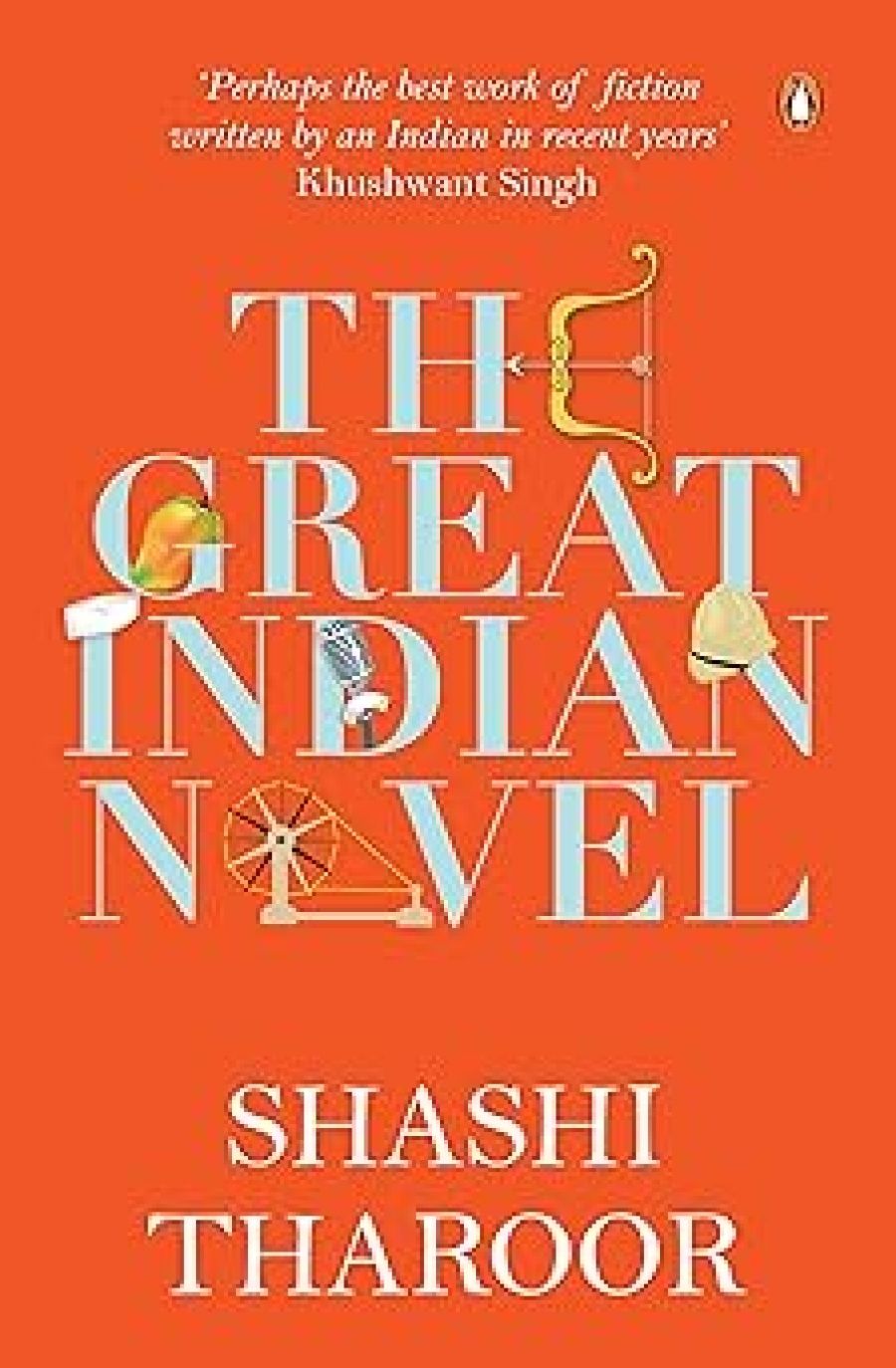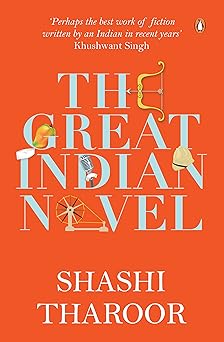
- Free Article: No
- Contents Category: Fiction
- Review Article: Yes
- Online Only: No
- Custom Highlight Text:
For the untutored Western reader this exuberant and clever novel about the histrionics of twentieth-century Indian politics invites comparison with Rushdie’s Midnight’s Children. But this is a mistake. Tharoor covers similar territory to Rushdie, and gives voice to the same virulent distaste for the late Mrs Gandhi, but his book couldn’t be more different.
- Book 1 Title: The Great Indian Novel
- Book 1 Biblio: Picador, 16. 95 pb
- Book 1 Cover Small (400 x 600):

Tharoor’s octogenarian narrator is Ved Vyas. One way or the other, he is related to all the major characters in his epic, a ‘tale told and twice told’. And while the characters wear the masks of Vyasa’s epic, they are instantly recognisable as the political heavyweights of contemporary India: Gandhi, Jinnah, Mountbatten, Nehru and his odious daughter.
Despite the device of a ubiquitous and self-serving narrator, it is clear that Tharoor has his own strong opinions. Gandhi, whom he sees as a political pragmatist, is a great man and a genius. Pandjit Nehru, cast as the blind Dritarashtra, is a deeply flawed man, but still we feel Tharoor’s admiration for his circumscribed greatness. Indira he loathes. She is sly and murderous almost from birth. While Tharoor’s narrator is near despair with Dritarashtra’s legitimate daughter and political heiress, he continues to have great hopes for the illegitimate offspring of his affair with the wife of the Viceroy (read Lady Mountbatten), a glorious girl who goes by the name of Draupadi Mokrasi. We are left in no doubt Miss Mokrasi will have her day of triumph in India.
I feel that the more one knows of Indian political history, and the Mahabharata, the richer the experience of this complex epic, which Tharoor handles with great panache. But Tharoor, as the Bengalis say when offered cod, has other fish to fry. His playful title not only refers to the Mahabharata, it also gesture to a chauvinistic conceit that the Great Indian Novel is actually an English novel and that India is merely a trope of English literature. Each of the books of Tharoor’ s epic is a variation on the title of a well-known novel about India, including ‘Midnight’s Parents’. Many of his inept and venal British officials carry names from English literature, such as a recently arrived British secretary, ‘Maurice Forster, just down from Cambridge’, or the nasty schoolmaster, Mr Kipling, or Paul Scott, the Lieutenant Governor.
But Tharoor’s most cruel mark is unmistakably Richard Attenborough, whose movie, Gandhi, gave most of us what smattering of Indian history we have.
The most consistently racist, obtuse and self-aggrandising of a sorry bunch of drink-sodden English administrators, and the one who survives this epic almost as long as Ved Vyas himself, is Sir Richard (no last name supplied) ‘whose round red cheeks gave him the appearance of a superannuated cherub’, last seen in Ved Vyas’s dream, ‘florid as ever with a large black camera on his shoulder’. Make no mistake, Tharoor does not care for the Western infatuation with Gandhi or with the imagined state of India:
… foetid slums, the dirt and despair and the disrepair, the children playing in rancid drains ... this is now the classic picture of India, is it not, as the French cinematographers take time off from filming the unclad forms of their women in order to focus with loving pity on the unclad forms of our children. They would have done this earlier, they and their pen wielding equivalents of earlier days, but somehow all the foreign observers then could only bring themselves to write about the glories of the British Empire.
For Ved Vyas, and for Shashi Tharoor, the British have created India, not in their artists’ imaginations, but in brutal reality, by cutting off the thumbs of Indian weavers to protect the Lancashire spinning mills and by signing over Indian peasant land to their favoured landlords: ‘the British killed the Indian artisan; they created the Indian “landless labourer”, they exported our full employment and they invented our poverty’.
Finally, then, Vyas’s tale, told and twice told, is this: ‘India is not an underdeveloped country but a highly developed one in an advanced state of decay.’ To understand a little more of this extraordinary place you should read this funny and profound and learned novel. If not great, it is very good.


Comments powered by CComment